
Have you ever read a book after a friend recommended it? Or seen a movie because it cleaned up at the Oscars? Or chosen a restaurant because there was a large queue outside? If you’re like most people, you’ve probably done all of these things more than a few times.
These are examples of what psychologists call ‘social proof,’ in which consumers form their opinions of something based on evidence from third parties. People naturally assume that a book a like-minded person enjoyed will be right up their alley, that an award-winning movie must be worth seeing, or that a popular restaurant will be worth the wait.
While social proof has always played a role in dictating societal trends and consumer habits, the online world has brought it further to the forefront, with a multitude of channels offering new and evolving ways for brands to present evidence of their quality through the endorsement of customers, official bodies, critics, and others.
So how can your school integrate social proof into your digital marketing efforts? Keep reading to find out.
1. Student Testimonials are Essential Pieces of Social Proof
Just as customers are one of the main sources of social proof for businesses, the most important social proof a school can provide is likely to come from your students. Student testimonials can be used to convey how friendly and nurturing your environment is, the quality of your courses and instructors, what to expect after graduation, and much more, all from a source that prospective applicants will trust implicitly.
Testimonials can be incorporated into your student recruitment strategy in many ways. Some schools will opt to present short quotes as snippets or ‘trust icons’, which can then be repurposed across your website, social media channels, email marketing campaigns, and even in your printed material.
Example: Falmouth University place short snippets of student testimonials on some of their program pages.

For a bit more depth, you may want to opt to present a testimonial in a longer form, asking current students and alumni to write pieces about your school and their experience. Another option is to have a member of your staff interview a student for a profile or ‘success story’ piece, which can be posted on your blog or news pages. This can be great way to highlight the specific achievements of graduates, and can be useful for all kinds of schools.
The key is to solicit graduates who have accomplished things your main target personas are likely to want to accomplish. A university or college success story, for instance, will most likely focus on an alumnus who has carved out a successful career in their field, while a language program or K-12 institution might prefer to highlight someone who has progressed to further study.
Example: CultureWorks, an ESL pathway program provider in Canada, often posts blogs about students who have successfully been accepted at universities after completing their course.

While social proof from alumni can be very effective, it’s important not to forget about the value your current students can provide. They are the ones experiencing your school in the present day, and can often provide more up to date, detailed insight into what life is like on campus. Many schools will use student ambassador programs to enlist current students to create content for their website, such as blogs, videos and social media posts.
Example: A piece on ‘Things to in Dundee’ on the University of Dundee’s Student Blog. A post like this is more effective when it comes from a current student, who will be in touch with the latest things that are happening in the area.
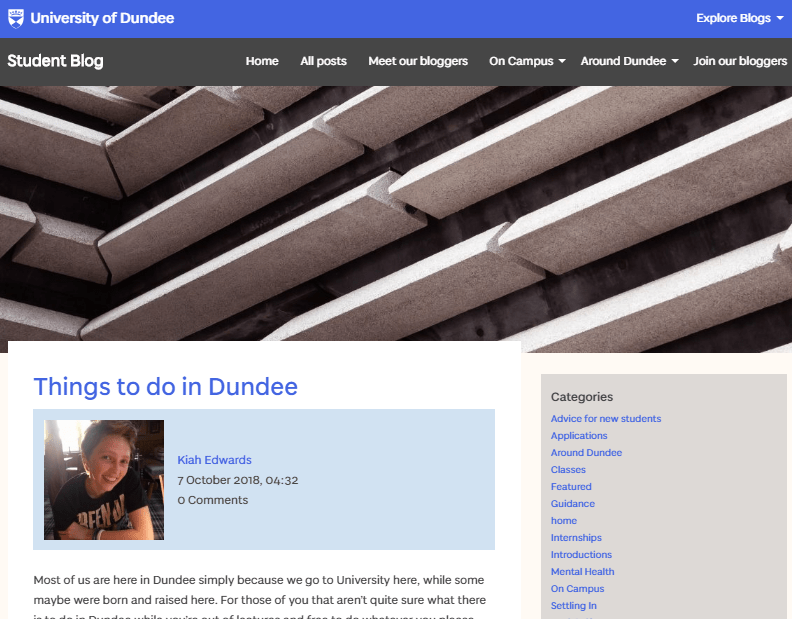
If you opt for this approach, the key is to give your student ambassadors as much freedom as possible. Although a reasonable amount of editorial control should be maintained, student-generated content needs to come across as authentic and unfiltered, and encouraging your ambassadors to be creative and experiment with humour and different approaches can make it a lot more engaging.
Example: The University of Waterloo’s uwaterloolife account on Instagram is run almost exclusively by students, with a different one doing a ‘takeover’ of the account every week. This approach allows each person to bring their own unique personality and ideas to the content produced, and shows prospective applicants that the current student body is active, engaged, and enthusiastic.

Both current students and alumni can also be used in certain cases to connect directly with prospective students. For example, many schools use international student ambassadors to follow up on inquiries in their native language, and others will also use current students as guides for campus tours, both in-person and online. Communicating with current and past students allows prospective applicants to get answers to any questions they may have from people that they trust. What’s more, seeing the enthusiasm these students have for being part of your school community will help to get them excited about enrolling.
Example: The London Business School has an extensive student ambassador program, with over a hundred students from a range of different nationalities available to answer prospects’ questions.
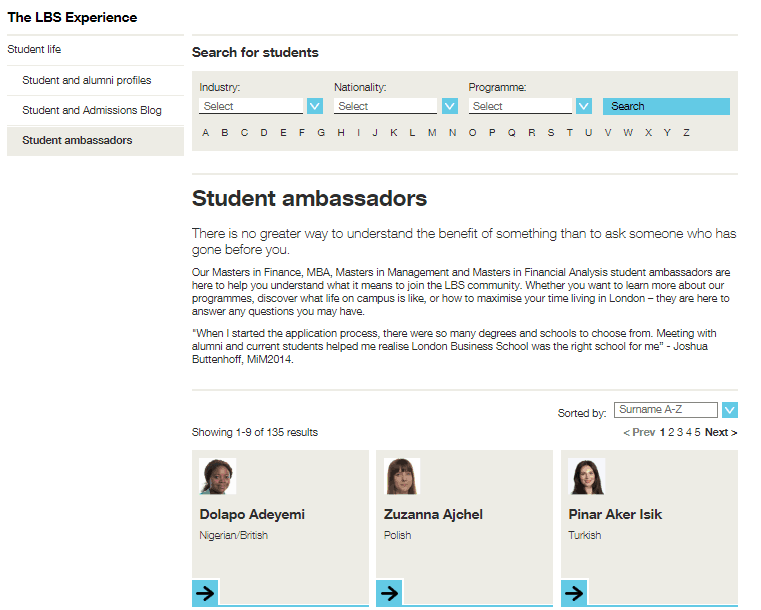
2. How Online Reviews Factor into Your Student Recruitment Plan
Another increasingly important form of social proof which we discussed in great detail in a recent blog is online reviews. Thanks to sites like Yelp, as well as Google My Business and Facebook Places, reviews and ratings have become a huge part of how web users search for and make choices about products and services, and this applies to schools, too.
In many ways, reviews are even more valuable as social proof than testimonials and other student-generated endorsements because they are not chosen and curated by the school, meaning they are uncensored and authentic.
Example: The University of Bologna’s Google Reviews page. Prospective students will often be more willing to trust a good review from an independent source like this.

Of course, schools cannot control how many reviews they get from their online community. However, it is possible to improve your chances of being reviewed by encouraging students to leave them through social media posts, CTAs on web content, and even email marketing.
Example: The London Metropolitan University encourages students to review them on WhatUni? through Facebook.
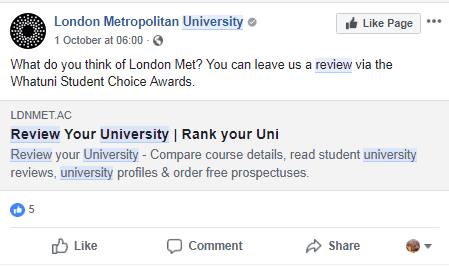
Specialized education review sites are also a valuable source of reviews, and many will afford schools control of elements of their own page, such as the images and description available.
Example: GoOverseas allows schools to provide descriptions, images, and videos to their course pages, helping to create a positive impression for would-be reviewers.
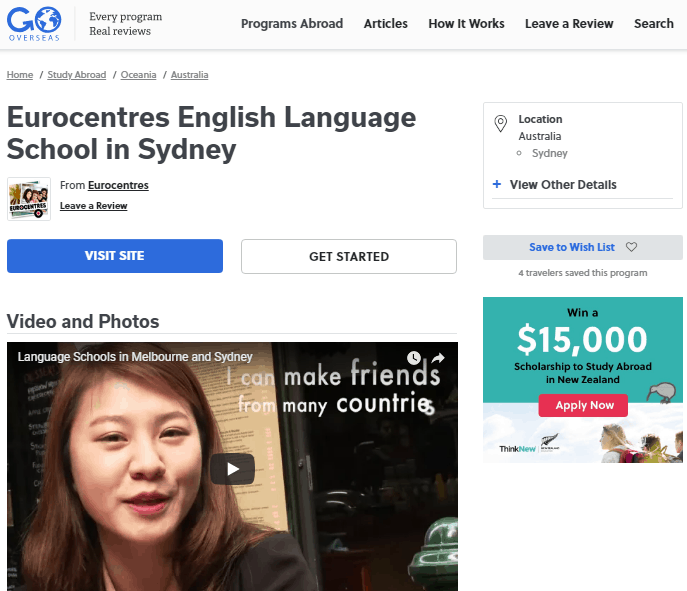
The downside to reviews, of course, is that you have no control over what people write, and your negative reviews will be just as visible as your positive ones. However, answering a negative review and showing concern and a desire to help can be a good way to make the best of a bad situation, and leave others who read it with the impression that your school will go the extra mile to deal with concerns.
3. Social Proof from Experts and Influencers in Student Recruitment
Influencer marketing has become ubiquitous in recent years. A form of promotion where a celebrity, opinion leader, or person with a large social media following posts endorsements of products or services, usually in exchange for payment, influencer marketing functions as a kind of supercharged form of social proof. In fact, social media content from influencers has been shown to receive up to eight times the engagement of content posted by brands themselves.
While ordinary influencer marketing isn’t really an advisable tactic for schools, there is a lot to be said for considering ways in which your school might be gaining the endorsement of influencers and experts organically, and how that can be highlighted. For instance, a well-known leader in a particular field visiting your institution as a guest speaker can bring a huge boost to your profile, and promoting it on your website and social media can be a great way to earn the respect of prospective students.
Example: Georgetown University featured a video on their Facebook page of a Q&A session the school organized with actor Bradley Cooper and the President of Marketing at Warner Brothers.

Highlighting any seal of approval you receive from organizations can also be valuable. For instance, it’s possible that many of your graduates go on to work at one particular organization, or that you have partnerships with companies for internships or work placements for your students, or even develop course material with them. Highlighting these relationships on your website can serve as a very effective form of social proof.
Example: The MA in Art and Design program at Cambridge School of Visual and Performing Arts was developed in partnership with Hearst Magazines UK, who also offer internship opportunities to students. An endorsement like this is a great example of expert social proof.

You may also have partnerships with other institutions that ease the path for students seeking further study. Featuring these school’s logos on your website, as well as some information about their programs and the details of your partnership can help promote both of your institutions, and show prospective students the progression opportunities available to them after completing their course at your institution.
Example: ASC English, an ESL school in Boston, has partnerships with several universities and colleges in the area for students seeking to go on to further study, and provides details on its website.

4. Highlighting Credentials in Your Student Recruitment Plan
A form of social proof which is especially critical in education is credentials. With many different options available, some of which may be suspect in their legitimacy, today’s prospective students are cautious that the qualifications they receive are fully accredited and will be respected by future employers and other institutions.
With that in mind, ensuring your school is clear and transparent about its accreditation, and makes it a prominent part of the message you promote in your student recruitment plan, can be a good way to reassure prospects that they are applying to reputable institution that will deliver on its promise.
Example: Centre of English Studies displays its accreditations and associations prominently on its website. In language education, where the quality and recognition of a qualification is often important to students, this kind of social proof can be very valuable.
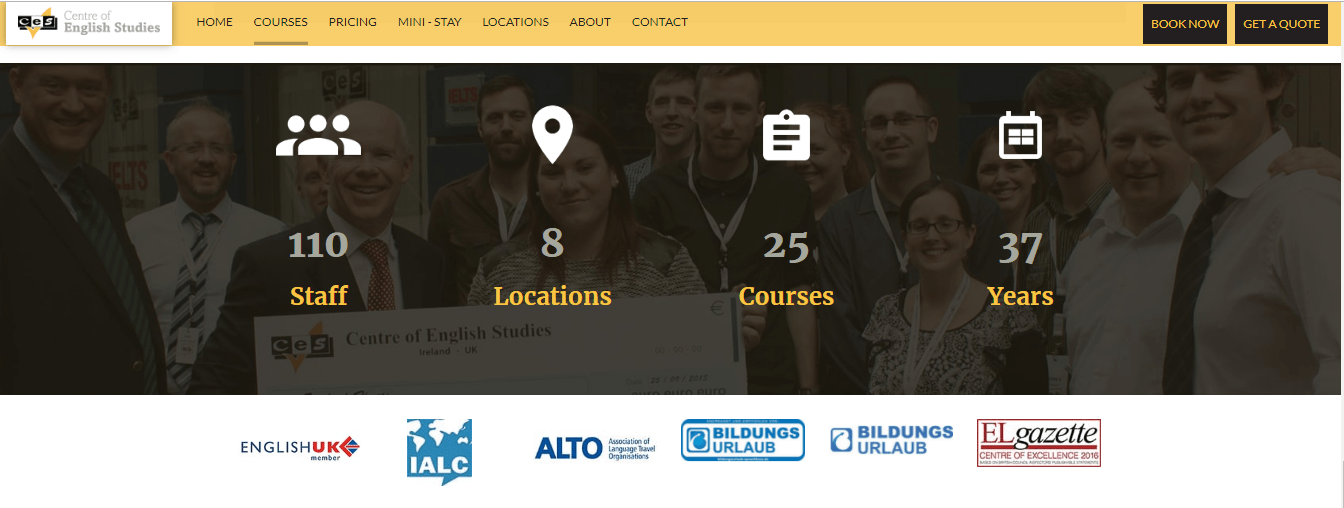
One thing to keep in mind is that it’s important to be very careful about how you present your credentials. Many accreditation bodies, particularly those that are state-run, are very stringent about the language institutions use, often insisting that certain specific phrases are not altered. Many otherwise well-meaning schools will fall into the trap of referring to their accreditation in a way that the accreditation body themselves does not allow, which can lead to censure from them, and even endanger the school’s credentials.
Awards, rankings, and any other forms of recognition of your school’s quality and excellence are another thing you could highlight on your site to boost its level of social proof. Just be sure to keep them updated and accurate. An out of date ranking, for example, can make it seem like your school is misrepresenting itself, and breed mistrust among prospective students.
Example: Schools like McGill University are often vocal about placing highly in the university rankings of respected publications like Maclean’s Magazine.

5. How Valuable is Social Media Engagement as Social Proof for Schools?
Seeing that others are doing things in numbers can also be a big ‘social proof’ driver for people, and this is especially true in the current online landscape. For instance, a school with a large and engaged social media following is likely to foster more confidence in prospective students, who will see it as a sign that your school inspires involvement among your current online community.
As a result, highlighting your social engagement can be a valuable way of demonstrating social proof. For instance, web pages and social media posts which are attracting large amounts of comments, shares, and reactions will automatically be seen as worth investigating by prospects who happen across them. Attaching social sharing buttons to posts on your website which track the number of shares each has received on different platforms can also go a long way towards convincing people that your content is worth checking out.
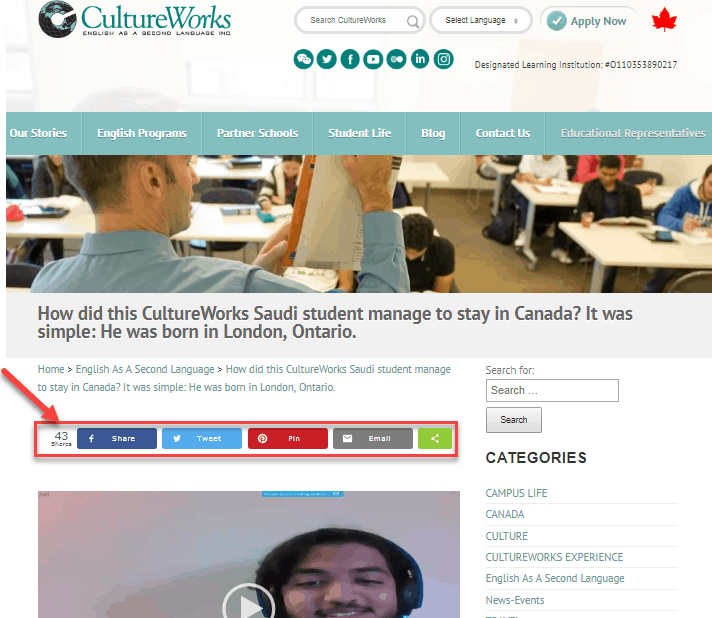
The downside of this, of course, is that posts which aren’t attracting high levels of engagement may also be perceived negatively. Some studies have shown that removing social share buttons from pages which don’t attract large amounts of shares actually increases engagement, with web users less likely to be turned off by the low figures. As with reviews, your social media visibility is not something you can edit or control, and you have to take the good with the bad.
However, while social proof can sometimes be a bit of a double-edged sword, it remains increasingly essential to building an authentic and trustworthy brand, and providing it should be a be a big part of your overall marketing plan for student recruitment. By focusing on your strengths and proactively addressing your weaknesses, your school can strengthen its credibility and ultimately enhance its reputation.







